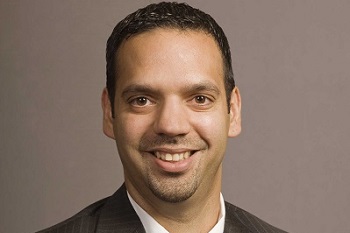The Department of Energy’s Wind Vision report assesses the potential economic and social benefits of a study scenario where U.S. wind power supplies 10% of the nation’s electrical demand by 2020, 20% by 2030, and 35% by 2050. It also outlines a roa...
Office of Critical Minerals and Energy Innovation
March 14, 2017This month marks the two-year anniversary of the Department of Energy’s Wind Vision report that quantifies the economic, environmental and social benefits of a wind energy future, if U.S. wind power supplied up to 35% of the nation’s electrical demand by 2050. The Wind Vision outlines a roadmap for growing the wind industry that could support more than 600,000 jobs in manufacturing, installation, maintenance and supporting services.
Here are some examples of the progress we’ve made toward this roadmap in just two short years.
Reducing Wind Costs
The Department of Energy supports a host of projects that reduce wind energy costs through technology advancements. One area focuses on improving wind resource characterization to increase wind plant efficiency that reduces risk for developers.
Action: Deployed two research buoys that measure the weather and oceanographic data, which is made available to the public. This is crucial for developers to appropriately design, size and site projects to help determine how much power they can produce. When the Department of Energy is not using the buoys, they can be used by industry partners.
As wind farms move offshore, floating foundations are necessary to capture 60% of U.S. offshore wind resources located in deep water, where conventional foundations are not feasible.
Action: Supported the University of Maine’s development of a concrete floating foundation that uses less steel and can be produced at a lower cost to harness wind energy in deep waters.
Action: To further lay the groundwork, we worked with the U.S. Department of the Interior to develop a joint strategy in 2016 to facilitate the development of the U.S. offshore wind industry and to achieve deployment levels consistent with the Wind Vision.
Expanding Developable Areas
Taller wind turbines and long-needed electrical grid upgrades can open the door to expanding U.S. wind deployment. For example, increasing wind turbine tower heights from 80 meters to 140 meters would increase the technical potential for land-based wind by two-thirds, allowing more states, particularly in the Southeast, to benefit from wind power.
Action: Supported Keystone Tower Systems to develop an innovative spiral welding process for wind turbine towers. This in-field manufacturing method can cut tower costs (up to 180 meters tall) by 40%.
Action: Funded Iowa State University to develop the Hexcrete Tower, which uses prefabricated concrete components, enabling a taller tower without special transportation requirements. This pilot project showed that towers constructed in this manner can reduce the cost of wind-generated electricity by more than 20%.
Action: Released a January 2017 report which confirmed that adding even limited transmission can significantly reduce the costs of supporting levels of wind deployment consistent with the Wind Vision. The study found that building just four currently proposed transmission projects would halve the level of wind curtailment – the times in which wind farm operators are told not to produce energy due to limited grid capacity.
Increasing Economic Value
To increase America’s manufacturing competitiveness as identified in the roadmap, our wind and advanced manufacturing offices have teamed up with public and private organizations on new methods to produce wind turbine components.
Action: Applied additive manufacturing, also known as 3D printing, to the production of wind turbine blade molds. This process eliminates the need to manufacture a “plug” that is then used to form a mold, from which fiberglass blades can then be made. This reduces the time and cost required for blade manufacturing.
We also engage with collaborative research groups and make investments to fund research and development projects that address environmental and wildlife challenges from the deployment of wind energy.
Action: Funded Purdue University to develop a technology that will characterize golden eagle vision and hearing. The goal is to collect data for future systems that could make it easier for golden eagles to detect and avoid wind turbines.
Action: Funded Frontier Wind to develop and test an ultrasonic acoustic bat deterrent system comprised of an array of ultrasonic transmitters mounted along the length of turbine blades. High-frequency sounds from these transmitters will cover the entire turbine rotor, with the goal of deterring bats from wind turbines.
Catalyzing Economic Development
The government actions listed above move new technologies forward and help overcome barriers for adding wind energy. These investments, which benefit the industry and the economy as a whole, are leveraged and expanded upon by individual private companies. A new analysis by Navigant estimates that wind energy has an annual economic impact of about $20 billion on the U.S. economy. Continuing these investments in technology innovation and market barrier mitigation will help maintain and advance the nation’s existing wind manufacturing infrastructure and economic benefits, as well as ensure the United States remains globally competitive.


